Find The Best Roof Waterproofing Contractors On Roofyng.com
Keep Your Home Dry with Expert Roof Waterproofing
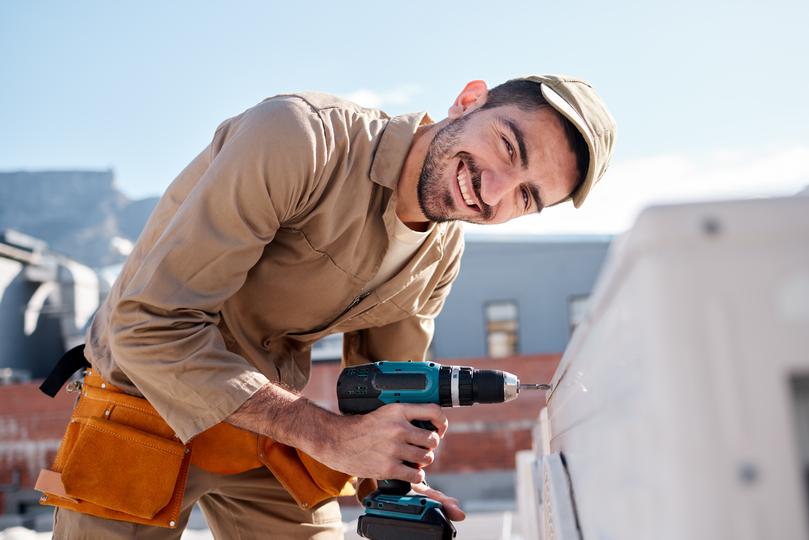
Discover Other Roofing Services
Roofers
Find trusted roofing companies near you. Get multiple quotes for roof installation, repair, and replacement services.
Roof Installation Estimate
Get a new roof installed by experienced professionals. We offer a variety of roofing materials and styles to suit your needs and budget.
Roofing Repair
Comprehensive roof repair services for all types of roofs. We fix leaks, damage, and other roofing issues to keep your property protected.
Commercial Roof Replacement
Complete roof replacement services for residential and commercial buildings. We remove your old roof and install a new roof with the material of your choice.
Commercial Roofing Services
Specialized roofing services for commercial buildings. We handle installation, repair, and replacement for all types of commercial roofs.
Shingle Roof Repair
Expert shingle roofers for your home. We specialize in asphalt shingle installation, repair, and replacement, offering a range of shingle types and colors.
Same Day Roof Repair
24/7 emergency roof repair services for urgent situations. We respond quickly to storm damage, leaks, and other roofing emergencies to protect your property.
Roof Leak Repair Companies
Fast and reliable roof leak repair services. We identify and fix the source of leaks to protect your property from water damage.
Tile Roofing
Expert tile roofing services for your home. We specialize in the installation, repair, and replacement of tile roofs, offering a variety of styles and colors.
Metal Roof Replacement
Durable and stylish steel roof installation services. We offer a variety of metal roofing options, including standing seam and corrugated metal.
Broken Shingle Repair
Expert shingle roof repair services for your home. We fix leaks, damaged or missing shingles, and other common shingle roofing problems.
Shingle Roof Replacement Cost
Affordable and efficient shingle roof replacement services. We remove your old shingles and install a new, durable asphalt shingle roof.
Flat Roof Installation
Expert flat roof installation and repair services. We work with a variety of flat roofing systems, including TPO, EPDM, and modified bitumen.
Green Roof Installation
Sustainable and eco-friendly green roof installation and maintenance. We create beautiful living roofs that benefit the environment and your property.
Hail Damage Roof Inspection
Specialized roofing companies experienced in hail damage repair and replacement. We work with insurance companies to get your roof restored after a hailstorm.
Metal Roof Repairs
Professional metal roof repair services for residential and commercial properties. We fix leaks, dents, rust, and other metal roof issues.
Home Roof Inspection
Certified roof inspectors provide thorough roof inspections for insurance claims, pre-purchase evaluations, and maintenance assessments.
Metal Roof Replacement Cost
Long-lasting and energy-efficient metal roof replacement services. We install durable steel or metal roofs that enhance your property's value and curb appeal.
Flashing Repair Services
Professional roof flashing repair to prevent leaks and water damage. We repair and seal flashing around chimneys, skylights, vents, and other roof penetrations.
EPDM Flat Roof Installation
Durable and long-lasting rubber roof (EPDM) installation and repair services. Ideal for flat or low-slope roofs on residential and commercial buildings.
TPO Roofing Contractor
Expert TPO roofing services for flat and low-slope roofs. We offer high-quality TPO roof installation, repair, and maintenance for residential and commercial pro
Fix Tile Roof
Specialized tile roof repair services. We fix leaks, replace cracked or broken tiles, and provide other tile roof maintenance to keep your roof in excellent cond
Industrial Roofing Services
Specialized roofing contractors for industrial facilities. We handle large-scale roof installations, repairs, and replacements for factories, warehouses, and oth
Reroof with Tile
Beautiful and durable tile roof replacement services. We install high-quality clay or concrete tile roofs, offering a classic and elegant look for your home.
Flat Roof Replacement Cost
Reliable flat roof replacement services for residential and commercial properties. We specialize in installing durable and weather-resistant flat roofing systems
Roof Tarping Services
24/7 emergency roof tarping services to protect your property from further damage. We provide temporary roof covers after storms or other incidents.
Chimney Flashing Repair
Expert chimney flashing repair services to prevent leaks and water damage. We ensure your chimney is properly sealed to protect your home.
Roof Insulation Installation
Improve your home's energy efficiency and comfort with our roof insulation services. We install and replace attic insulation to reduce energy costs and keep your
Wood Shake Roofing Contractors
Beautiful and durable cedar shake roofing services. We specialize in cedar shake installation, repair, and replacement, providing a classic and elegant look for
Finding The Right Roof Waterproofing Contractor Is Easy With Roofyng.com

- Tell Us About Your Needs
- Provide details about your property, your roof type, and the level of waterproofing you need.
- We Connect You With Local Contractors
- We'll match you with experienced and reputable roof waterproofing contractors in your area.
- Compare Quotes & Choose The Best Fit
- Review quotes, compare services, and choose the contractor who best meets your needs and budget. We provide you with contractor profiles, ratings, and reviews to help you decide.
- Get Your Roof Waterproofed!
- With the right contractor on board, you can ensure your roof is properly waterproofed, protecting your property from the elements for years to come.
Why Choose Roofyng.com for Roof Waterproofing?
The smarter way to find Roof Waterproofing Service suppliers

- Vetted and Experienced Contractors
- We carefully vet all roofing contractors listed in our directory, ensuring they are licensed, insured, and have a proven track record in roof waterproofing. You can be confident that you're connecting with reputable professionals skilled in various waterproofing techniques.
- Comprehensive Waterproofing Solutions
- Our listed contractors offer a wide range of waterproofing solutions for different roof types and needs, including:
- Liquid Applied Membranes: Seamless, liquid-applied coatings that create a waterproof barrier, suitable for flat or low-slope roofs.
- Sheet Membranes: Waterproof sheets, such as TPO, PVC, or EPDM, installed in overlapping layers for a durable and long-lasting solution.
- Sealants and Coatings: Specialized sealants and coatings to address leaks, cracks, and gaps in flashing, seams, or penetrations.
- Below-Grade Waterproofing: Solutions for waterproofing foundations and basements to prevent water intrusion from below ground level.
- Competitive Quotes and Transparent Pricing
- We believe in providing you with clear and competitive pricing information. Our platform allows you to request free quotes from multiple roof waterproofing contractors. Compare prices, services, and warranties before making a decision.
- Focus on Quality and Durability
- A quality roof waterproofing system should last for many years. We feature contractors who prioritize durability and long-lasting performance. They use top-grade materials and proven application techniques to ensure your roof is protected from water damage for the long term.
- Prevent Costly Water Damage
- Water damage to your property can be expensive and disruptive to repair. Roof waterproofing is an investment that helps prevent these issues. Our listed contractors understand the importance of a well-waterproofed roof and can provide solutions that protect your home or business from water intrusion.
- Free and User-Friendly Platform
- Roofyng.com is free to use for homeowners and businesses. Our platform is designed to be user-friendly and efficient. Simply enter your project details, and we'll connect you with qualified roof waterproofing contractors in your area.
Protect Your Business with Expert Waterproofing
Find Commercial Roof Waterproofing Contractors
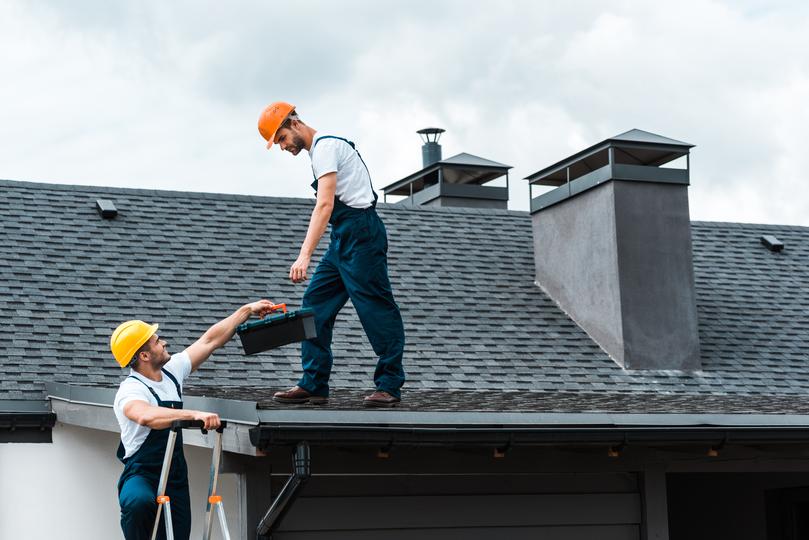
Professional Roofing Services
Find trusted roofing companies near you. Get multiple quotes for roof installation, repair, and replacement services.
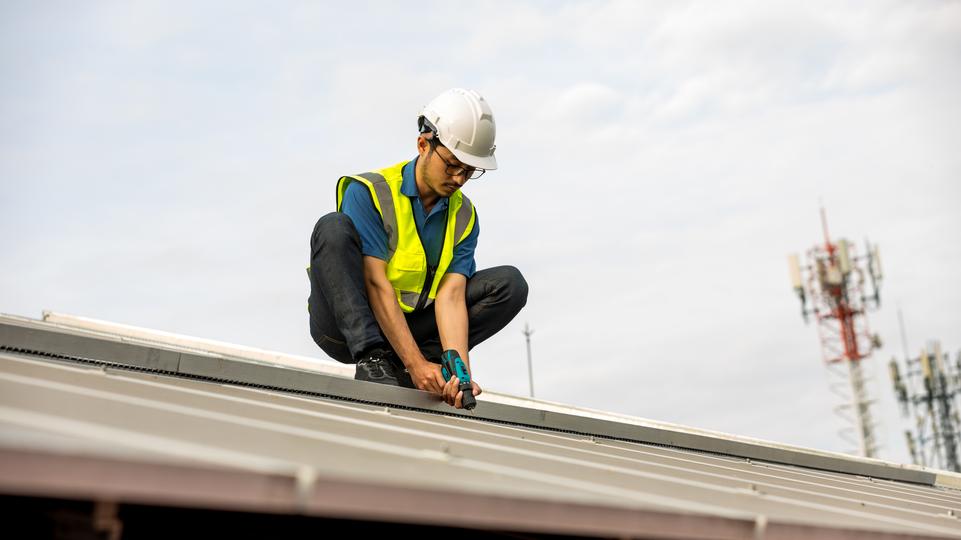
Professional Roof Installation
Get a new roof installed by experienced professionals. We offer a variety of roofing materials and styles to suit your needs and budget.

Roofing Repair
Comprehensive roof repair services for all types of roofs. We fix leaks, damage, and other roofing issues to keep your property protected.
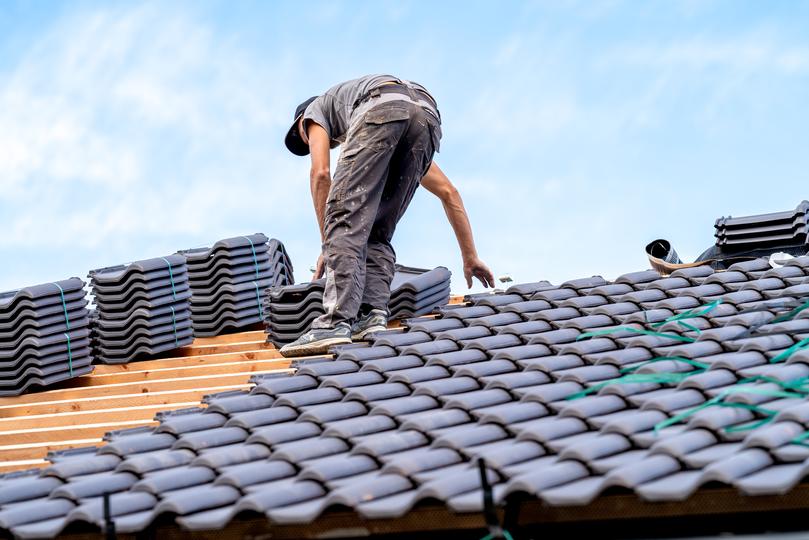
Roof Replacement Near Me
Complete roof replacement services for residential and commercial buildings. We remove your old roof and install a new roof with the material of your choice.

Commercial Roofing Contractors
Specialized roofing services for commercial buildings. We handle installation, repair, and replacement for all types of commercial roofs.

Emergency Roof Leak Repair
24/7 emergency roof repair services for urgent situations. We respond quickly to storm damage, leaks, and other roofing emergencies to protect your property.
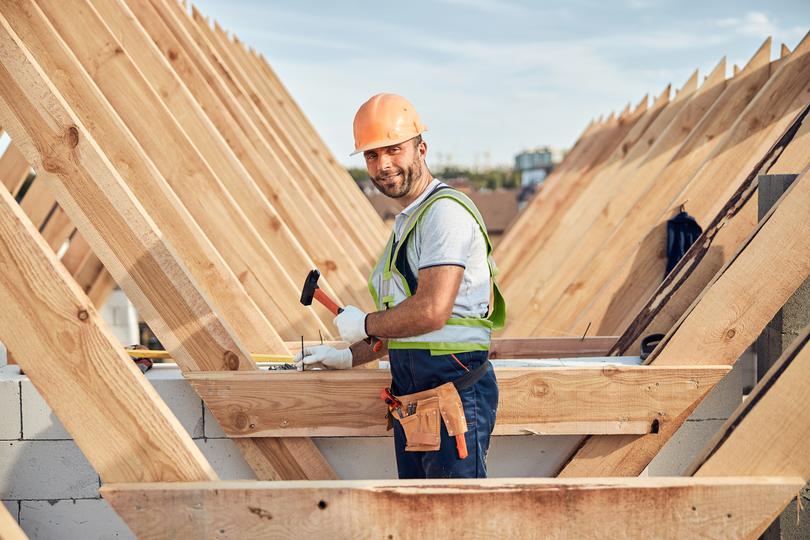
Roof Leak Repair Contractors
Fast and reliable roof leak repair services. We identify and fix the source of leaks to protect your property from water damage.

Metal Roof Repair
Durable and stylish steel roof installation services. We offer a variety of metal roofing options, including standing seam and corrugated metal.
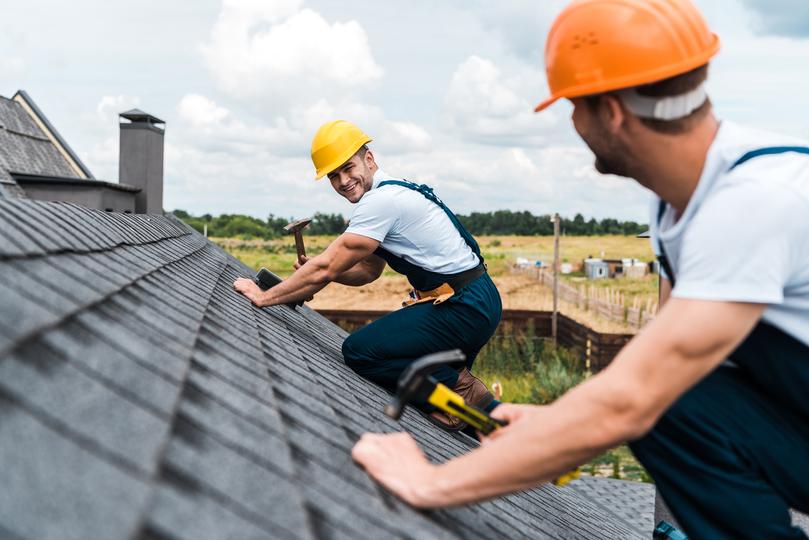
Commercial Flat Roofers
Expert flat roof installation and repair services. We work with a variety of flat roofing systems, including TPO, EPDM, and modified bitumen.

Green Roofing Contractors
Sustainable and eco-friendly green roof installation and maintenance. We create beautiful living roofs that benefit the environment and your property.
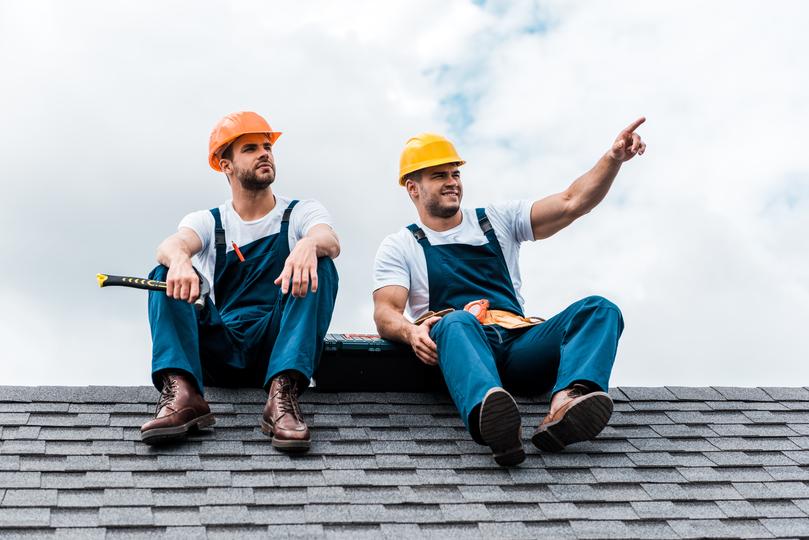
Hail Damage Roofing Companies
Specialized roofing companies experienced in hail damage repair and replacement. We work with insurance companies to get your roof restored after a hailstorm.

Metal Roof Repair
Professional metal roof repair services for residential and commercial properties. We fix leaks, dents, rust, and other metal roof issues.
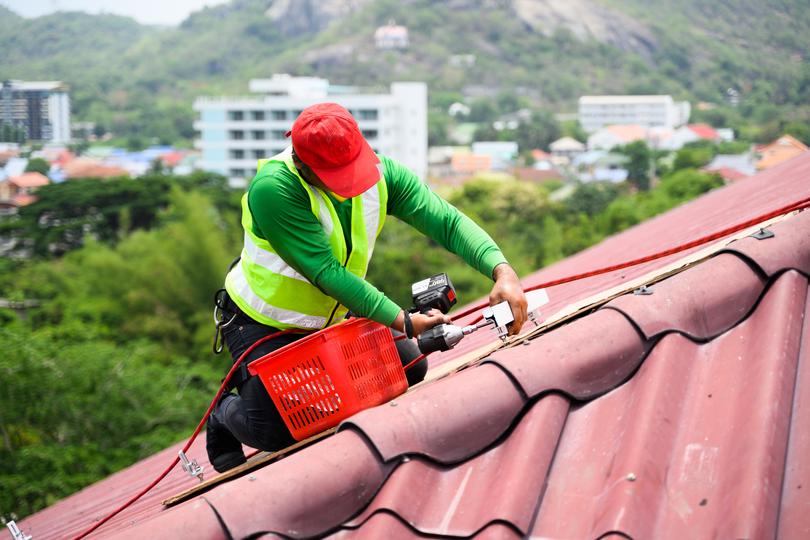
Roof Inspector
Certified roof inspectors provide thorough roof inspections for insurance claims, pre-purchase evaluations, and maintenance assessments.

Replace Metal Roof
Long-lasting and energy-efficient metal roof replacement services. We install durable steel or metal roofs that enhance your property's value and curb appeal.

Wall Flashing Repair
Professional roof flashing repair to prevent leaks and water damage. We repair and seal flashing around chimneys, skylights, vents, and other roof penetrations.

Roof Waterproofing
Professional roof waterproofing services to protect your property from leaks and water damage. We apply high-quality sealants, membranes, and coatings to ensure
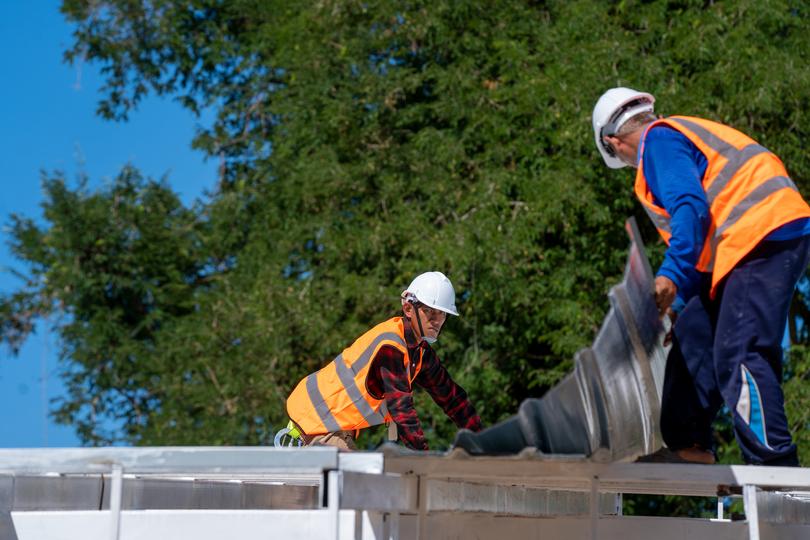
EPDM Roof Installers
Durable and long-lasting rubber roof (EPDM) installation and repair services. Ideal for flat or low-slope roofs on residential and commercial buildings.
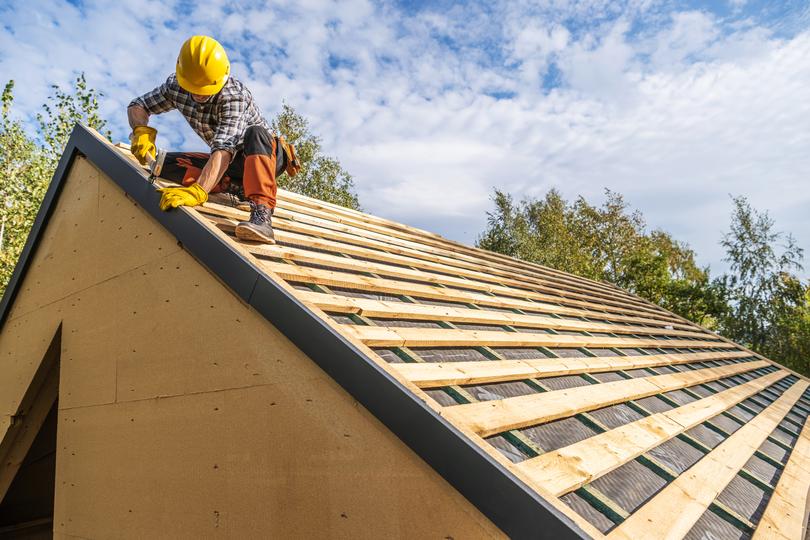
TPO Roofing
Expert TPO roofing services for flat and low-slope roofs. We offer high-quality TPO roof installation, repair, and maintenance for residential and commercial pro

Factory Roofers
Specialized roofing contractors for industrial facilities. We handle large-scale roof installations, repairs, and replacements for factories, warehouses, and oth

Residential Flat Roof Replacement
Reliable flat roof replacement services for residential and commercial properties. We specialize in installing durable and weather-resistant flat roofing systems
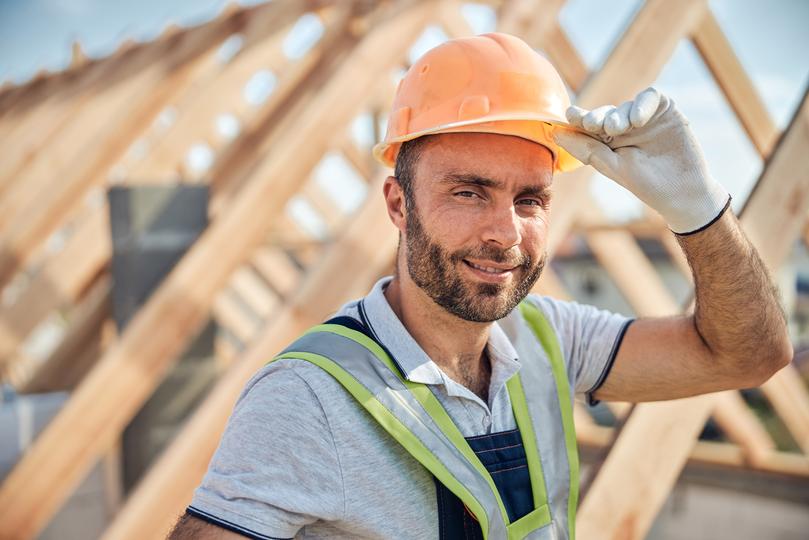
Emergency Roof Tarping Near Me
24/7 emergency roof tarping services to protect your property from further damage. We provide temporary roof covers after storms or other incidents.
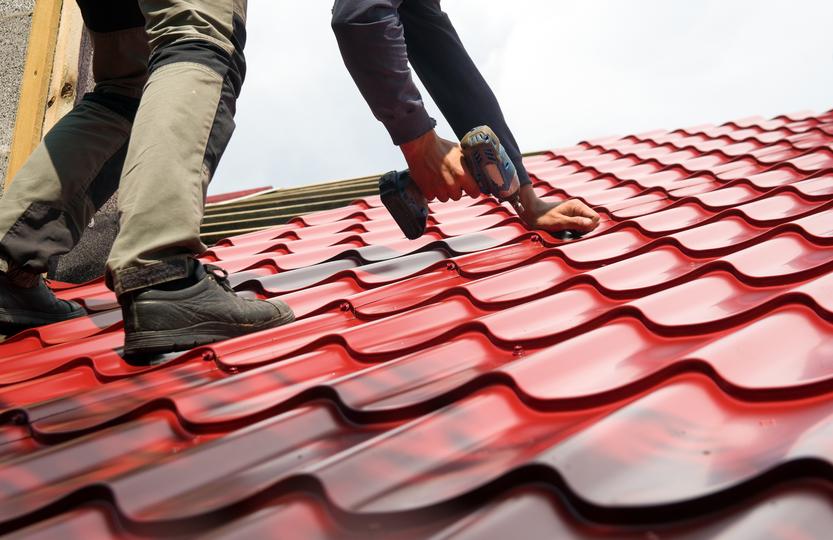
Roof Insulation Replacement
Improve your home's energy efficiency and comfort with our roof insulation services. We install and replace attic insulation to reduce energy costs and keep your
Keep Your Home Safe and Dry with Quality Waterproofing
Find Residential Roof Waterproofing Contractors

Roofing Contractors
Find trusted roofing companies near you. Get multiple quotes for roof installation, repair, and replacement services.

Affordable Roof Installation
Get a new roof installed by experienced professionals. We offer a variety of roofing materials and styles to suit your needs and budget.

Fix Roof
Comprehensive roof repair services for all types of roofs. We fix leaks, damage, and other roofing issues to keep your property protected.

Roof Replacement Companies
Complete roof replacement services for residential and commercial buildings. We remove your old roof and install a new roof with the material of your choice.

Shingle Roofing Contractors
Expert shingle roofers for your home. We specialize in asphalt shingle installation, repair, and replacement, offering a range of shingle types and colors.

Roof Repair Emergency
24/7 emergency roof repair services for urgent situations. We respond quickly to storm damage, leaks, and other roofing emergencies to protect your property.

Stop Roof Leaks
Fast and reliable roof leak repair services. We identify and fix the source of leaks to protect your property from water damage.

Tile Roofing Company
Expert tile roofing services for your home. We specialize in the installation, repair, and replacement of tile roofs, offering a variety of styles and colors.

Metal Roofing Contractors
Durable and stylish steel roof installation services. We offer a variety of metal roofing options, including standing seam and corrugated metal.

Fix Shingle Roof
Expert shingle roof repair services for your home. We fix leaks, damaged or missing shingles, and other common shingle roofing problems.

Affordable Shingle Roof Replacement
Affordable and efficient shingle roof replacement services. We remove your old shingles and install a new, durable asphalt shingle roof.

Flat Roof Installers
Expert flat roof installation and repair services. We work with a variety of flat roofing systems, including TPO, EPDM, and modified bitumen.

Green Roof Installers
Sustainable and eco-friendly green roof installation and maintenance. We create beautiful living roofs that benefit the environment and your property.

Roofing Companies for Hail Damage
Specialized roofing companies experienced in hail damage repair and replacement. We work with insurance companies to get your roof restored after a hailstorm.

Fix Metal Roof
Professional metal roof repair services for residential and commercial properties. We fix leaks, dents, rust, and other metal roof issues.

Home Roof Inspection
Certified roof inspectors provide thorough roof inspections for insurance claims, pre-purchase evaluations, and maintenance assessments.

Reroof with Metal
Long-lasting and energy-efficient metal roof replacement services. We install durable steel or metal roofs that enhance your property's value and curb appeal.

Repair Roof Flashing
Professional roof flashing repair to prevent leaks and water damage. We repair and seal flashing around chimneys, skylights, vents, and other roof penetrations.

Roof Waterproofing Companies
Professional roof waterproofing services to protect your property from leaks and water damage. We apply high-quality sealants, membranes, and coatings to ensure

EPDM Roof Installers
Durable and long-lasting rubber roof (EPDM) installation and repair services. Ideal for flat or low-slope roofs on residential and commercial buildings.

TPO Roofing Contractor
Expert TPO roofing services for flat and low-slope roofs. We offer high-quality TPO roof installation, repair, and maintenance for residential and commercial pro
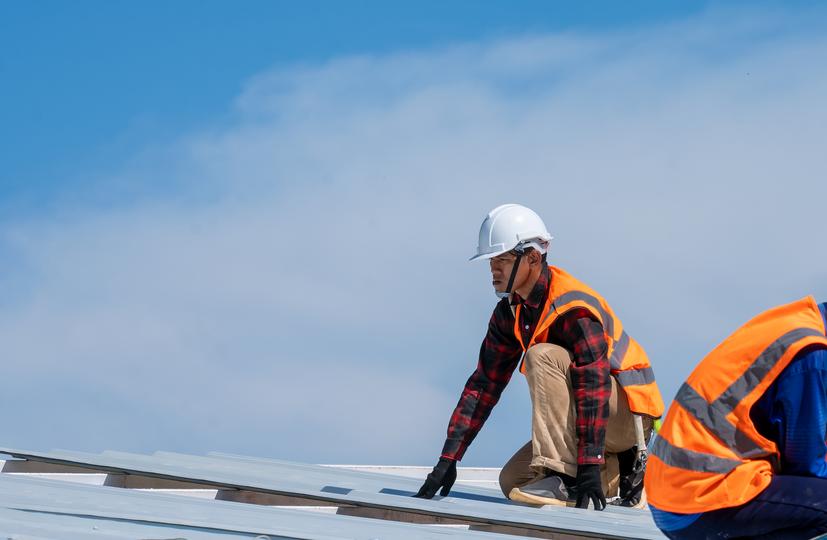
Repair Tile Roof
Specialized tile roof repair services. We fix leaks, replace cracked or broken tiles, and provide other tile roof maintenance to keep your roof in excellent cond

Tile Roof Replacement Contractors
Beautiful and durable tile roof replacement services. We install high-quality clay or concrete tile roofs, offering a classic and elegant look for your home.

Upgrade Flat Roof Membrane
Reliable flat roof replacement services for residential and commercial properties. We specialize in installing durable and weather-resistant flat roofing systems

Emergency Roof Tarping Near Me
24/7 emergency roof tarping services to protect your property from further damage. We provide temporary roof covers after storms or other incidents.
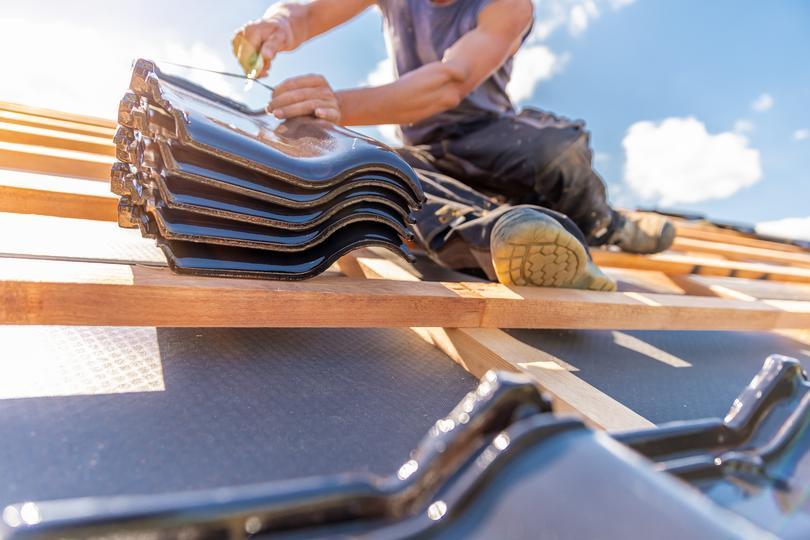
Chimney Waterproofing
Expert chimney flashing repair services to prevent leaks and water damage. We ensure your chimney is properly sealed to protect your home.

Roof Insulation Services
Improve your home's energy efficiency and comfort with our roof insulation services. We install and replace attic insulation to reduce energy costs and keep your

Wood Shake Roof Repair
Beautiful and durable cedar shake roofing services. We specialize in cedar shake installation, repair, and replacement, providing a classic and elegant look for
Need Roof Waterproofing?
Find The Best Roof Waterproofing Contractors on Roofyng.com!
Roof Waterproofing Glossary
Waterproofing
Waterproofing Membrane
Liquid-Applied Membrane
Sheet Membrane
Flashing
Sealant
Roof Deck
Roof Slope
Drainage
Scupper
Water Test
Moisture Meter
Roofing Contractor
Warranty
Building Code
Roof Waterproofing FAQs
What is roof waterproofing, and why is it important?
How much does roof waterproofing cost in the USA?
- Roof size and complexity
- Type of waterproofing system used
- Condition of the existing roof
- Accessibility of the roof
- Labor costs in your region
What are the different types of roof waterproofing?
- Liquid-Applied Membranes: These are seamless, liquid coatings that cure to form a waterproof barrier, often used on flat or low-slope roofs. Common types include silicone, polyurethane, and acrylic coatings.
- Sheet Membranes: These are prefabricated sheets of waterproof material, such as TPO, PVC, or EPDM, installed in overlapping layers to create a watertight seal. They are suitable for various roof types, including flat and sloped roofs.
- Bituminous Membranes: Traditional waterproofing, often used on flat roofs. Consists of layers of asphalt-impregnated felt or fiberglass, adhered with hot asphalt. Durable and cost-effective.
What is the best roof waterproofing method?
- Liquid-applied membranes are excellent for flat or low-slope roofs, offering seamless coverage.
- Sheet membranes are versatile and suitable for various roof types, including sloped roofs.
- Bituminous membranes are a durable and cost-effective option for flat roofs.
How do I choose a reliable roof waterproofing contractor?
- Experience and Expertise: Look for contractors with a proven track record in roof waterproofing, specifically with the type of system you're considering. Ask about their experience and qualifications.
- Licensing and Insurance: Verify that the contractor is licensed to operate in your area and carries adequate insurance coverage, including liability and workers' compensation. This protects you from liability.
- Reputation: Check online reviews, ratings, and testimonials from previous customers. Look for positive feedback and a consistent history of quality work.
- Written Estimates and Warranties: Obtain detailed written estimates outlining the scope of work, materials to be used, labor costs, and any additional fees. Ensure they offer warranties on both materials and workmanship.
- Communication: Choose a contractor who is responsive, communicates clearly, and addresses your concerns.
Can I waterproof my roof myself?
What are the signs that my roof needs waterproofing?
- Leaks and Water Stains: Visible water stains on ceilings or walls, damp spots, or dripping water are clear signs of leaks and potential water intrusion.
- Mold or Mildew Growth: The presence of mold or mildew on ceilings or walls, especially in areas near the roof, suggests moisture buildup and possible leaks.
- Cracked or Damaged Roofing Materials: Cracks or damage to shingles, tiles, or other roofing materials can compromise the roof's ability to shed water effectively, requiring waterproofing.
- Damaged Flashing: Damaged, corroded, or missing flashing around chimneys, vents, skylights, or other roof penetrations can lead to leaks.
- Ponding Water on Flat Roofs: Standing water on a flat roof after rainfall indicates poor drainage and can cause damage to the roofing materials, requiring waterproofing.
How can I tell if my roof is leaking?
- Water Stains: Look for discolored patches or streaks on your ceiling or walls. These stains might appear yellowish, brownish, or grayish and often have a circular or irregular shape.
- Dripping Water: The most obvious sign is water dripping from the ceiling or walls, especially during or after rainfall.
- Dampness or Musty Odor: Feel for dampness in your attic or notice a musty smell in certain rooms, especially after rain.
- Mold or Mildew Growth: Black, green, or white patches on ceilings, walls, or in the attic are often indicators of prolonged moisture exposure due to leaks.
- Sagging Drywall: If drywall on your ceiling appears to be sagging or bulging, it could be a sign of water damage from a leak above.
- Exterior Damage: Inspect your roof from the outside for missing, cracked, or curled shingles, damaged flashing, or any other visible signs of damage that could allow water penetration.
What are the benefits of waterproofing a flat roof?
- Leak Prevention: A primary function, preventing water from penetrating the roof and causing damage to the building structure and interior.
- Extended Roof Lifespan: Protects the roofing materials from weathering, UV damage, and ponding water, extending their lifespan.
- Improved Energy Efficiency: Waterproofing systems can improve thermal insulation, reducing heat transfer and lowering energy costs.
- Protection of Assets: Safeguards equipment, inventory, and interior finishes from water damage.
- Reduced Maintenance Costs: Reduces the likelihood of leaks and water damage, minimizing the need for costly repairs.
How do you waterproof a roof?
- Liquid-Applied Membranes: Applying a seamless, liquid coating, such as silicone, polyurethane, or acrylic, that cures to form a waterproof barrier. These are often used on flat or low-slope roofs.
- Sheet Membranes: Installing overlapping sheets of waterproof material, such as TPO, PVC, or EPDM, mechanically fastened or adhered to the roof deck.
- Bituminous Membranes: Layering asphalt-impregnated felt or fiberglass, hot-mopped with asphalt to create a waterproof barrier, mainly used on flat roofs.
- Flashing and Sealants: Installing or repairing flashing around chimneys, vents, skylights, and other penetrations, using sealants to ensure a watertight seal.
What is the difference between a hot-applied and cold-applied waterproofing membrane?
Hot-Applied Membranes: Typically involve heating asphalt or other bituminous materials to a liquid state and then applying them to the roof surface. This method creates a strong bond and a seamless, waterproof barrier. It's often used for built-up roofing (BUR) systems.
Cold-Applied Membranes: Applied without heat, either in liquid form (like silicone or acrylic coatings) or as self-adhesive sheets (like some modified bitumen or single-ply membranes). They offer easier installation and faster curing times.
How long does it take for a roof coating to dry?
What is a roof waterproofing membrane made of?
- Bitumen: Asphalt-based, modified with polymers for flexibility and weather resistance. Used in built-up and modified bitumen systems.
- Synthetic Rubber (EPDM): Durable, flexible, UV-resistant, commonly used in single-ply membranes.
- Thermoplastics (TPO, PVC): Durable, flexible, and reflective, providing energy efficiency benefits.
- Liquid Coatings: Silicone, acrylic, or polyurethane-based. Seamless and easy to apply.
Do I need to remove the old roof before waterproofing?
What is the difference between roof waterproofing and roof restoration?
Roof Waterproofing: Focuses on creating a barrier to prevent water penetration. It involves applying membranes or coatings to seal the roof surface and protect it from leaks.
Roof Restoration: Involves a more comprehensive approach to improving the roof's overall condition and extending its lifespan. It may include cleaning, minor repairs, and the application of a protective coating. It often includes waterproofing as a key component, but it can also encompass other maintenance and repair tasks to revitalize the roof.
In essence, waterproofing is a specific aspect of roof restoration.
How do I waterproof a leaking roof?
- Identify the Source of the Leak: Thoroughly inspect the roof to pinpoint the exact location of the leak. This may involve checking the roof covering, flashing, vents, chimneys, skylights, and other penetrations.
- Repair Any Damage: Repair or replace any damaged or deteriorated roofing materials, flashing, or other components contributing to the leak.
- Choose the Right Waterproofing Method: Select a suitable waterproofing system based on the roof type, slope, and severity of the leak. Options include liquid-applied membranes, sheet membranes, or sealants.
- Prepare the Roof Surface: Thoroughly clean the roof surface, removing debris, dirt, and any loose or peeling materials. Ensure the surface is dry before applying the waterproofing system.
- Apply the Waterproofing System: Follow the manufacturer's instructions carefully for the selected waterproofing system. Apply the membrane or coating in even layers, ensuring proper coverage and adhesion.
- Inspect and Test: After application, inspect the waterproofing system for any gaps, bubbles, or defects. Consider performing a water test to confirm its effectiveness.
How do I waterproof a roof valley?
- Install Ice and Water Shield: Apply a self-adhesive, waterproof membrane, like an ice and water shield, along the valley, extending it several feet beyond the valley's edges.
- Install Metal Flashing: Place a W-shaped metal valley flashing over the ice and water shield, overlapping adjacent pieces by at least 6 inches.
- Shingle Over Flashing: Install the roofing shingles over the flashing, ensuring proper overlapping and staggering to shed water effectively.
- Seal Seams: Seal all seams and nail holes with roofing cement or sealant tape to create a watertight barrier.
How do I waterproof around a roof vent?
- Install a Flashing Boot: Choose a flashing boot specifically designed for the type and size of vent pipe. The boot should have a flexible base that conforms to the roof's shape and a metal flange that extends onto the roof surface.
- Apply Sealant: Apply roofing cement or sealant around the base of the flashing boot, where it contacts the roof, ensuring a watertight seal.
- Secure the Flashing: Fasten the flashing boot to the roof deck using nails or screws, applying sealant over the fasteners.
- Shingle Over the Flashing: Install roofing shingles over the flashing, ensuring they overlap the flashing correctly.
- Apply Additional Sealant: Apply a bead of sealant around the edges of the flashing where it meets the shingles to provide extra protection against leaks.
How do I stop my roof from leaking in the rain?
- Identify the Source: Find the exact location of the leak, which may involve inspecting the attic, roof covering, flashing, vents, chimneys, and other penetrations.
- Temporary Fix: During heavy rain, place buckets or tarps to contain the water. If safe, consider applying a temporary patch using roofing cement or sealant tape.
- Professional Repair: Contact a qualified roofing contractor for a thorough inspection and repair. They can identify the cause, fix the leak, and prevent future problems.
Can I waterproof my deck roof?
What is the best time of year to waterproof a roof?
How do I waterproof my roof for winter?
- Waterproofing: Existing waterproofing is in good condition. Address any leaks or cracks promptly.
- Insulation: Adequate insulation in the attic to prevent heat loss, reducing snowmelt and ice dam formation.
- Ventilation: Proper attic ventilation to maintain consistent roof temperatures and minimize moisture buildup.
- Gutter Cleaning: Clean gutters and downspouts to ensure free water flow and prevent ice dams.
- Tree Trimming: Trim overhanging branches to avoid damage or debris buildup.
How often should I reapply roof waterproofing?
How can I find a roof waterproofing specialist near me?
What is roof waterproofing, and why is it important?
How much does roof waterproofing cost in the USA?
- Roof size and complexity
- Type of waterproofing system used
- Condition of the existing roof
- Accessibility of the roof
- Labor costs in your region
What are the different types of roof waterproofing?
- Liquid-Applied Membranes: These are seamless, liquid coatings that cure to form a waterproof barrier, often used on flat or low-slope roofs. Common types include silicone, polyurethane, and acrylic coatings.
- Sheet Membranes: These are prefabricated sheets of waterproof material, such as TPO, PVC, or EPDM, installed in overlapping layers to create a watertight seal. They are suitable for various roof types, including flat and sloped roofs.
- Bituminous Membranes: Traditional waterproofing, often used on flat roofs. Consists of layers of asphalt-impregnated felt or fiberglass, adhered with hot asphalt. Durable and cost-effective.
What is the best roof waterproofing method?
- Liquid-applied membranes are excellent for flat or low-slope roofs, offering seamless coverage.
- Sheet membranes are versatile and suitable for various roof types, including sloped roofs.
- Bituminous membranes are a durable and cost-effective option for flat roofs.
How do I choose a reliable roof waterproofing contractor?
- Experience and Expertise: Look for contractors with a proven track record in roof waterproofing, specifically with the type of system you're considering. Ask about their experience and qualifications.
- Licensing and Insurance: Verify that the contractor is licensed to operate in your area and carries adequate insurance coverage, including liability and workers' compensation. This protects you from liability.
- Reputation: Check online reviews, ratings, and testimonials from previous customers. Look for positive feedback and a consistent history of quality work.
- Written Estimates and Warranties: Obtain detailed written estimates outlining the scope of work, materials to be used, labor costs, and any additional fees. Ensure they offer warranties on both materials and workmanship.
- Communication: Choose a contractor who is responsive, communicates clearly, and addresses your concerns.
Can I waterproof my roof myself?
What are the signs that my roof needs waterproofing?
- Leaks and Water Stains: Visible water stains on ceilings or walls, damp spots, or dripping water are clear signs of leaks and potential water intrusion.
- Mold or Mildew Growth: The presence of mold or mildew on ceilings or walls, especially in areas near the roof, suggests moisture buildup and possible leaks.
- Cracked or Damaged Roofing Materials: Cracks or damage to shingles, tiles, or other roofing materials can compromise the roof's ability to shed water effectively, requiring waterproofing.
- Damaged Flashing: Damaged, corroded, or missing flashing around chimneys, vents, skylights, or other roof penetrations can lead to leaks.
- Ponding Water on Flat Roofs: Standing water on a flat roof after rainfall indicates poor drainage and can cause damage to the roofing materials, requiring waterproofing.
How can I tell if my roof is leaking?
- Water Stains: Look for discolored patches or streaks on your ceiling or walls. These stains might appear yellowish, brownish, or grayish and often have a circular or irregular shape.
- Dripping Water: The most obvious sign is water dripping from the ceiling or walls, especially during or after rainfall.
- Dampness or Musty Odor: Feel for dampness in your attic or notice a musty smell in certain rooms, especially after rain.
- Mold or Mildew Growth: Black, green, or white patches on ceilings, walls, or in the attic are often indicators of prolonged moisture exposure due to leaks.
- Sagging Drywall: If drywall on your ceiling appears to be sagging or bulging, it could be a sign of water damage from a leak above.
- Exterior Damage: Inspect your roof from the outside for missing, cracked, or curled shingles, damaged flashing, or any other visible signs of damage that could allow water penetration.
What are the benefits of waterproofing a flat roof?
- Leak Prevention: A primary function, preventing water from penetrating the roof and causing damage to the building structure and interior.
- Extended Roof Lifespan: Protects the roofing materials from weathering, UV damage, and ponding water, extending their lifespan.
- Improved Energy Efficiency: Waterproofing systems can improve thermal insulation, reducing heat transfer and lowering energy costs.
- Protection of Assets: Safeguards equipment, inventory, and interior finishes from water damage.
- Reduced Maintenance Costs: Reduces the likelihood of leaks and water damage, minimizing the need for costly repairs.
How do you waterproof a roof?
- Liquid-Applied Membranes: Applying a seamless, liquid coating, such as silicone, polyurethane, or acrylic, that cures to form a waterproof barrier. These are often used on flat or low-slope roofs.
- Sheet Membranes: Installing overlapping sheets of waterproof material, such as TPO, PVC, or EPDM, mechanically fastened or adhered to the roof deck.
- Bituminous Membranes: Layering asphalt-impregnated felt or fiberglass, hot-mopped with asphalt to create a waterproof barrier, mainly used on flat roofs.
- Flashing and Sealants: Installing or repairing flashing around chimneys, vents, skylights, and other penetrations, using sealants to ensure a watertight seal.
What is the difference between a hot-applied and cold-applied waterproofing membrane?
Hot-Applied Membranes: Typically involve heating asphalt or other bituminous materials to a liquid state and then applying them to the roof surface. This method creates a strong bond and a seamless, waterproof barrier. It's often used for built-up roofing (BUR) systems.
Cold-Applied Membranes: Applied without heat, either in liquid form (like silicone or acrylic coatings) or as self-adhesive sheets (like some modified bitumen or single-ply membranes). They offer easier installation and faster curing times.
How long does it take for a roof coating to dry?
What is a roof waterproofing membrane made of?
- Bitumen: Asphalt-based, modified with polymers for flexibility and weather resistance. Used in built-up and modified bitumen systems.
- Synthetic Rubber (EPDM): Durable, flexible, UV-resistant, commonly used in single-ply membranes.
- Thermoplastics (TPO, PVC): Durable, flexible, and reflective, providing energy efficiency benefits.
- Liquid Coatings: Silicone, acrylic, or polyurethane-based. Seamless and easy to apply.
Do I need to remove the old roof before waterproofing?
What is the difference between roof waterproofing and roof restoration?
Roof Waterproofing: Focuses on creating a barrier to prevent water penetration. It involves applying membranes or coatings to seal the roof surface and protect it from leaks.
Roof Restoration: Involves a more comprehensive approach to improving the roof's overall condition and extending its lifespan. It may include cleaning, minor repairs, and the application of a protective coating. It often includes waterproofing as a key component, but it can also encompass other maintenance and repair tasks to revitalize the roof.
In essence, waterproofing is a specific aspect of roof restoration.
How do I waterproof a leaking roof?
- Identify the Source of the Leak: Thoroughly inspect the roof to pinpoint the exact location of the leak. This may involve checking the roof covering, flashing, vents, chimneys, skylights, and other penetrations.
- Repair Any Damage: Repair or replace any damaged or deteriorated roofing materials, flashing, or other components contributing to the leak.
- Choose the Right Waterproofing Method: Select a suitable waterproofing system based on the roof type, slope, and severity of the leak. Options include liquid-applied membranes, sheet membranes, or sealants.
- Prepare the Roof Surface: Thoroughly clean the roof surface, removing debris, dirt, and any loose or peeling materials. Ensure the surface is dry before applying the waterproofing system.
- Apply the Waterproofing System: Follow the manufacturer's instructions carefully for the selected waterproofing system. Apply the membrane or coating in even layers, ensuring proper coverage and adhesion.
- Inspect and Test: After application, inspect the waterproofing system for any gaps, bubbles, or defects. Consider performing a water test to confirm its effectiveness.
How do I waterproof a roof valley?
- Install Ice and Water Shield: Apply a self-adhesive, waterproof membrane, like an ice and water shield, along the valley, extending it several feet beyond the valley's edges.
- Install Metal Flashing: Place a W-shaped metal valley flashing over the ice and water shield, overlapping adjacent pieces by at least 6 inches.
- Shingle Over Flashing: Install the roofing shingles over the flashing, ensuring proper overlapping and staggering to shed water effectively.
- Seal Seams: Seal all seams and nail holes with roofing cement or sealant tape to create a watertight barrier.
How do I waterproof around a roof vent?
- Install a Flashing Boot: Choose a flashing boot specifically designed for the type and size of vent pipe. The boot should have a flexible base that conforms to the roof's shape and a metal flange that extends onto the roof surface.
- Apply Sealant: Apply roofing cement or sealant around the base of the flashing boot, where it contacts the roof, ensuring a watertight seal.
- Secure the Flashing: Fasten the flashing boot to the roof deck using nails or screws, applying sealant over the fasteners.
- Shingle Over the Flashing: Install roofing shingles over the flashing, ensuring they overlap the flashing correctly.
- Apply Additional Sealant: Apply a bead of sealant around the edges of the flashing where it meets the shingles to provide extra protection against leaks.
How do I stop my roof from leaking in the rain?
- Identify the Source: Find the exact location of the leak, which may involve inspecting the attic, roof covering, flashing, vents, chimneys, and other penetrations.
- Temporary Fix: During heavy rain, place buckets or tarps to contain the water. If safe, consider applying a temporary patch using roofing cement or sealant tape.
- Professional Repair: Contact a qualified roofing contractor for a thorough inspection and repair. They can identify the cause, fix the leak, and prevent future problems.
Can I waterproof my deck roof?
What is the best time of year to waterproof a roof?
How do I waterproof my roof for winter?
- Waterproofing: Existing waterproofing is in good condition. Address any leaks or cracks promptly.
- Insulation: Adequate insulation in the attic to prevent heat loss, reducing snowmelt and ice dam formation.
- Ventilation: Proper attic ventilation to maintain consistent roof temperatures and minimize moisture buildup.
- Gutter Cleaning: Clean gutters and downspouts to ensure free water flow and prevent ice dams.
- Tree Trimming: Trim overhanging branches to avoid damage or debris buildup.